In each garden there is a place that I want to decorate with creepers. A special place in gardening takes a real "king" of flowering vines - Clematis Ville de Lyon. Its luxurious large flowers that make their way through the green foliage adorn the arbor, high buildings, arches and fences. About the features of cultivation of this beautiful hybrid varieties of clematis we discuss in this article.
Content |
Clematis Ville de Lyon, a description of
Clematis Ville de Lyon is the most popular French hybrid in domestic flowerflowers. The history of this hybrid has been already 120 years old and for all this time its popularity has never decreased.
The rich bushes of Clematis Ville de Lyon occur almost in every garden. You can learn this creation of breeders in such a varietal features:
- Clematis Ville de Lyon is a curly plant of a shrub type of iltike family.
- Its bending brown stems can grow up to 3-4 m in length. The color of adult shoots is brown, and young twigs are light brown.
- The inflorescences of Liana are large, in a pretty form they have 14-16 cm in the diameter. Clematis color is distinguished by the originality: its petals have the color of the Fuchsia, but as a pronounced purple tone is acquired. The flower is shaped out of 6 cups and bright yellow dense-free stamens.
- Clematis of large-flowered Ville de Lyon is long and abundant. The first flowers bloom at the end of July, or in the first days of August, if spring was cool. And before the arrival of the first frosts, Clematis is still happy with his bloom for a long time.
Clematis Ville de Lyon is popular not only due to its exquisite beauty. The variety has many advantages that are not inherent in other types of Lian.
- Clematis Ville de Lyon shows enviable resistance to fungal diseases.
- The variety has a high winter hardiness, so does not need an annual digging in the harsh regions. In addition, he is a perennial.
- The indisputable advantage of this Clematis is its unsurpassed flowering, fast vegetation, ease of care and reproduction.
Clematis Ville de Lyon, Growing from seeds
Clematis Ville de Lyon can be bought in the form of a strong seedling and land at home. But much more interesting to grow this beautiful Lian from seeds. Success primarily depends on the quality of the purchased seed material, so buying is better in proven stores or nurseries.
The process of sowing Clematis seeds Ville de Lyon is not much different from the cultivation of other varieties of Clematis.
- Seeds of this variety are large, so they germinate for a long time. To improve germination, they are stratified. For this, the seeds are laying into the freezer for half an hour, then removed and withstand 2 hours at room temperature. Such an algorithm of action is repeated three times.
- After stratification, the seeds are treated with a growth stimulant, washed, laid out on a flat surface, covered with glass and leave in a dark place at a temperature of + 25 ° C.
- After 4 days, the shelter from time to time removes the seedlings to be ventilated.
- After 10-12 days, sprouts are sprout from the seeds.
- At this stage, seeds can be soiled in the soil. Use for Clematis a mixture of a fertile substrate and sand. Seeds are covered with a thin earthy ball, which is slightly rolled.
Seed seeds can be in open soil. Before sowing, they are stated for about 3 months at temperatures up + 4 ° C. Sowing spend in spring or autumn. In the latter case, the seeds are covered by a snow ball, which should hold the whole winter or immediately after sowing mulch the beds with sawdust, is covered with additional shields.
The flowering of Clematis grown Clematis Ville De Lyon comes for 2-3 years. When it comes to this, depends on climatic conditions and care for Liana.
Clematis Ville de Lyon, landing features
Clematis sit down at any time, starting with early spring and ending in late autumn. But Clematis Ville De Lyon variety is preferably imprisoned in September-October. It is better to do it near the high hedges or arbors, then it quickly climbs and forms a thick juicy bush. And knowing all the subtleties of planting this variety of Clematis, you can transform your site beyond recognition.
Where to plant Clematis Ville de Lyon
- Clematis Ville De Lyon loves sunny places with any vertical supports - fences, walls, arches. But the open-burning sun is undesirable, since in such conditions the flowers of Clematis will burn out, and lose their attractiveness. Therefore, the optimal version for the variety is a lace half.
- Choosing a place for a new plant, pay attention to the soil moisture. Clematis do not tolerate too wet soil, so there are no places with high groundwater sitting.
- The composition of the soil plays an important role. It should be fertile, not acidic, breathable. To create optimal soil in the landing pit, a mixture of humus, ash and superphosphate are made. If the acidity of the earth is too high, 150-200 g of lime are added additionally. At this stage, it is important not to forget to build drainage from pebbles or a brightened brick.
Rules of landing Clematis Ville de Lyon
Before landing Clematis Ville de Lyon, you need to think about the support. Without it, the plant will not be able to crawl up and fully form. Liana clings exclusively with leaves, since the ammunition of this culture is unusual. The poet of the support should be overhaul, and temporary structures are unsuitable. If the support is manufactured in the form of an arch or a fence, its value should be at least 2 m in height and 1.5 m in width. Very convenient to grow Clematis Ville De Lyon according to gardener reviews, using a chain net. On it, Liana quickly and evenly distributes his shoots.
Clematis landing subtleties:
- Before planting a seedling, its rhizome is immersed in a clay tank.
- If several bushes are planted at once, it is withstanding at least 80 cm between them.
- The deepening of the bush is carried out in such a way that the growth kidney is at a depth of 7-8 cm on the soil level. This is necessary to increase frost resistance or harmonious branching to the parties.
- During the landing, they think about how to create a light coolness for Clematis root. To this end, you can use a mulch or disembark around Clematis low plants that will create a light shadension of the priority circle.
Important! Clematis, planted on a plot with a scorching sun, per season can completely burn out, which will lead to his death.
Clematis Ville de Lyon, garden care
For Clematis Ville De Lyon it is easy to care what attracts gardeners. Moderate feeding, simple trimming and watering as needed - the basic requirements of beautiful Liana.
Watering and fertilizer Clematis Ville de Lyon
- Throughout the season, this variety fertilize three times. You can use any mineral complexes intended for flowering plants. The feeders begin to enter for the second year after landing.
- In the spring at the stage of active vegetation, nitrogen fertilizers use. They can be replaced by an infusion of a bird litter or a regular cow.
- Complete mineral mixtures are made in the process of forming buds.
- To maintain flowering, you can feed Clematis every 14 days, alternating organic fertilizers and mistakes. Before the start of the cold weather make ash.
- Watering clematis drying is carried out at around-trunk circle. As a rule, in hot time, Liana is moisturized regularly, but the frequency and abundance of watering depends on the place of its growth. With each watering of the soil in the rich circle, it is frozen, which prevents drying and overheating the root system.
Advice! If Clematis, after the fifth year of life, suddenly crushed or stopped blooming at all, it means that it lacks nutrients or the watering mode is disrupted.
Preparation of Clematis Ville De Lyon to wintering
Ville de Lyon variety has a good winter hardiness. With moderate dipping and shelter peat, it is experiencing frost without loss to -25⁰. However, in the regions with a more severe climate, Clematis, the on the eve of winter is removed from the supports and not cutting, put the shoots to the ground. Previously on the rhizome laid leaves. Such a shelter reliably protects Lian from even the harsh frosts. In the spring, Clematis is cut off.
Crossis Pruning Ville De Lyon
Two years after landing, Vil de Lyon grade spends on the formation of a strong root system. Occasionally several colors can appear, but abundant flowering starts only for 4 year. So that Liana was able to fully increase the authentic mass, the first year all the boutons need to be turned to dissolve.
Liana Ville De Lyon needs decorative trimming. The kuste is given the desired silhouette in the spring to the dissolution of greenery or in the fall in front of wintering. All shoots are cut at 7-10 cm above the kidney. The height of Clematis is left of about 20-30 cm, which serves as an excellent shower to abundant flowering. Conduct a trimming of a given variety in the third form.
Features of the breeding of Clematis Ville De Lyon
Clematis varieties under consideration determine not only seed, but also in a vegetative way.
Ville de Lyon is carried out at the time of formation of buds - from May to June.
- Healthy shoots are cut, from the middle part of which 6-centimeter cuttings are made with a pair of sheets and interstitial.
- The cuttings are treated with any stimulator of the growth of the root system and root into fertile soil in any capacity, or immediately for a bed near the guy.
The reproduction of Liana Ville de Lyon is the highest possible option.
- Near Kusta make grooves 6-8 cm deep into.
- Next, they put the shoots of Clematis in them, they are fixed them, sprinkled with nutrient soil, watered.
- Until the end of the summer, a strong root system is formed in the place of interstice, and the new bush can be separated from the maternal bush. But it is better to do this only to the next spring, then for the summer Clematis will have time to be reliably rooted and will be able to overvolt.
The division of the bush is another method of breeding Clematis Ville de Lyon.
- A bush, which is not less than 5 years old, carefully dig and divided into delays.
- At each of them there should be 2 escapes.
- If the bush is very ancient, it does not dig it, but slightly roll up the rhizome and carefully separate the part from it with the roots and sit down.
Clematis Diseases and Pests Ville De Lyon
- Sometimes you can see that beautiful greens and numerous Clematis buds fade. Most often, this is due to the illiterate watering of the plant, but also one cannot be eliminated. Although Clematis has a good immunity to fungi, sometimes it can be infected with flourous dew, rust or fusariasis.
- It is difficult to deal with such diseases, so it is desirable to carry out prevention in the spring and autumn. For this, the bush is treated with burgundy liquid. If the traces of the fungal disease have already appeared, all the affected greens are cut off, and the shoots and the soil are abundantly treated with fungicide.
If the diseases of Clematis Ville de Lyon arise rarely, then the attack of pests happens often.
- The most terrible pest is nematode. It strikes completely all the plant that will have to destroy, and the Earth is to disappear. After that, at the site of the growth of Clematis, several years are not planted.
- Finished moths and butterflies Put the pupa on the foliage. The emerging caterpillars eat greens by twisting it into the tube. To destroy the bush until the moment of the bootonization is treated with insecticide.
- Dangerous for clematis slippers and snails. In the spring, they actively eat young leaves of Clematis, not giving him to grow fully. Pests are collected by hand or sprinkled around the coland of ashes.
- The TLL and the web tick sucks all the juice from Clematis, which is the reason for the yellowing and extinguishing of greenery. For treatment, any insecticides or infusion of garlic are suitable.
Clematis Ville de Lyon, like other varieties, is undemanding in care, is rarely increasing, growing rapidly and decorates the garden with its chic colors. When creating good conditions for a flower, it can safely grow in one place for about 40 years. Therefore, Clematis Ville De Lyon will become one of the most favorite plants in the garden.

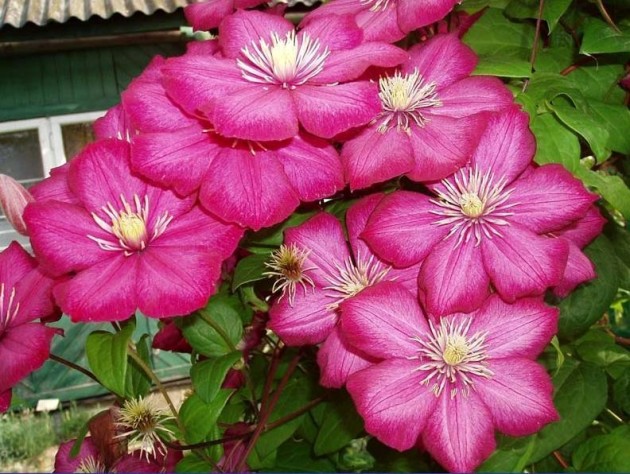
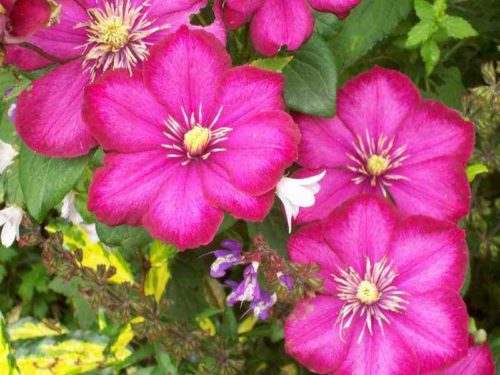
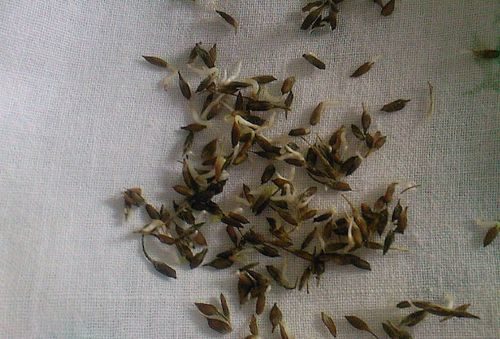
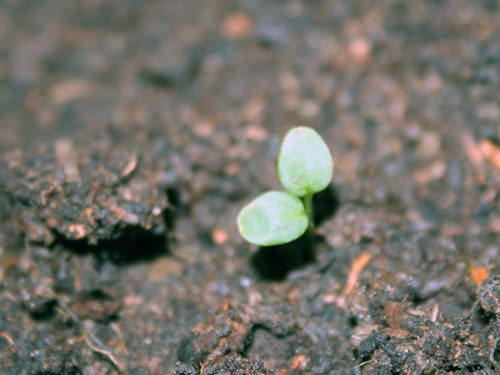
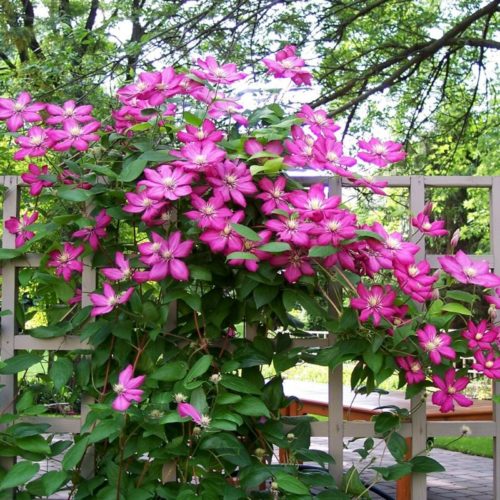
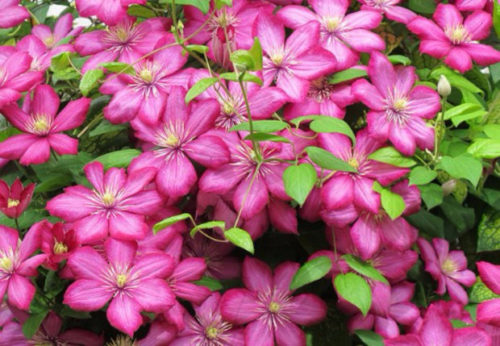
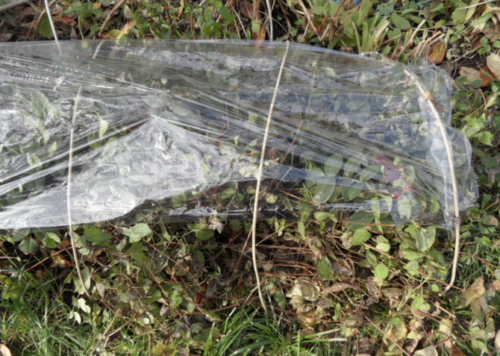

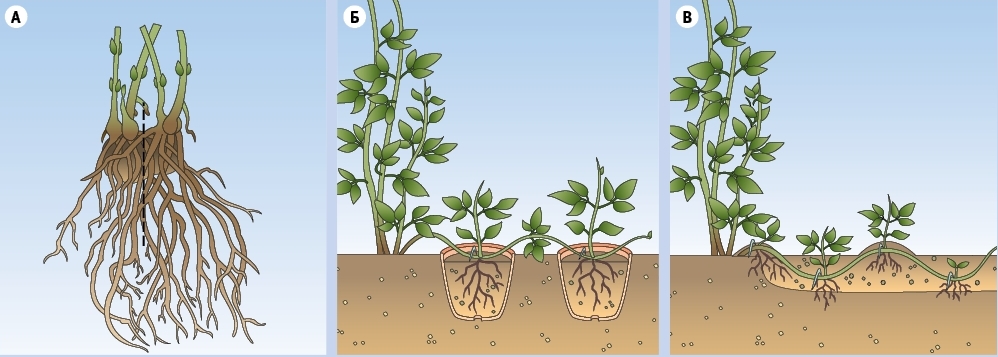
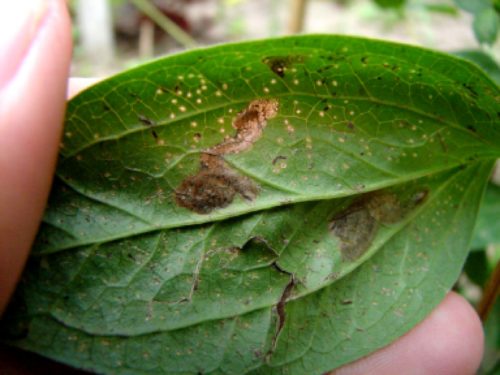
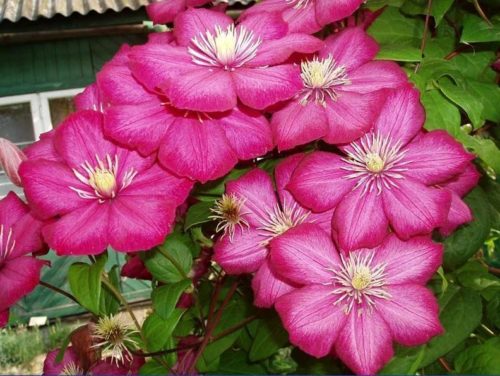
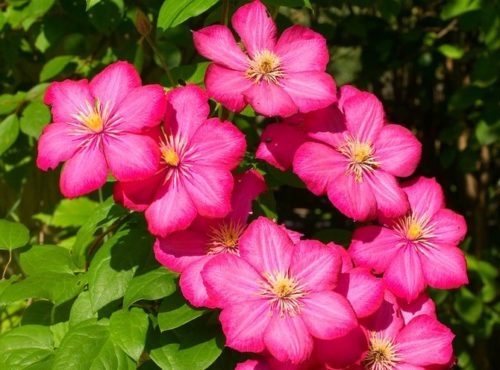
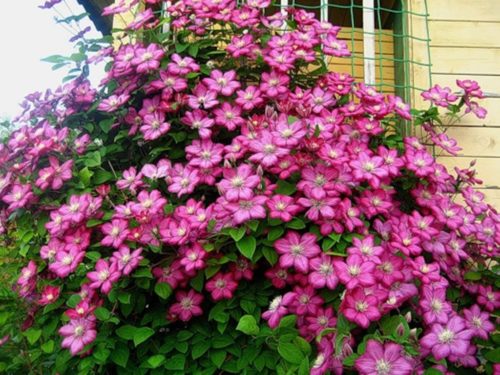
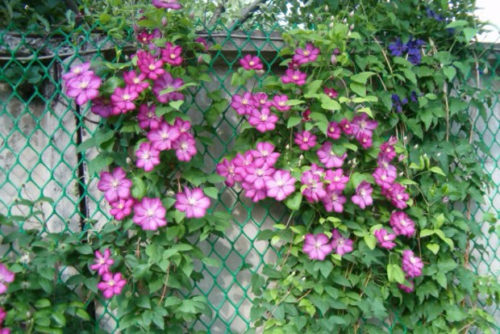
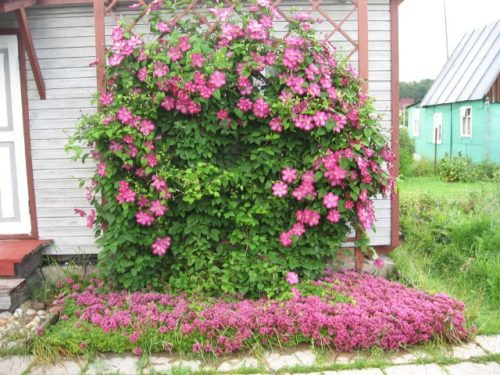












 Start a discussion ...
Start a discussion ...